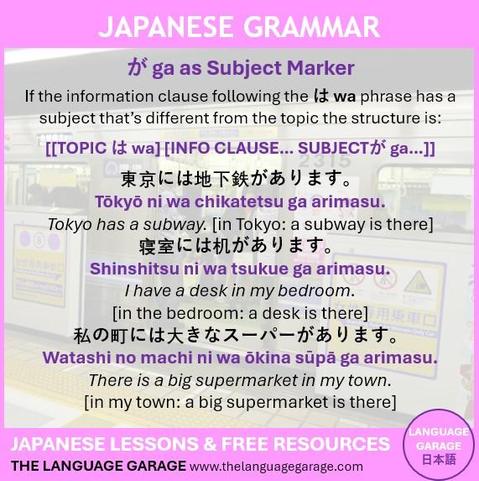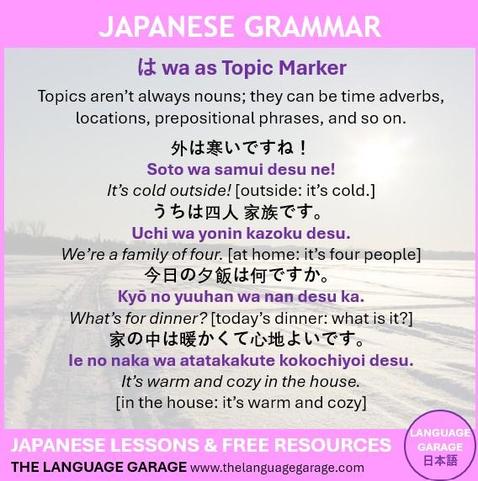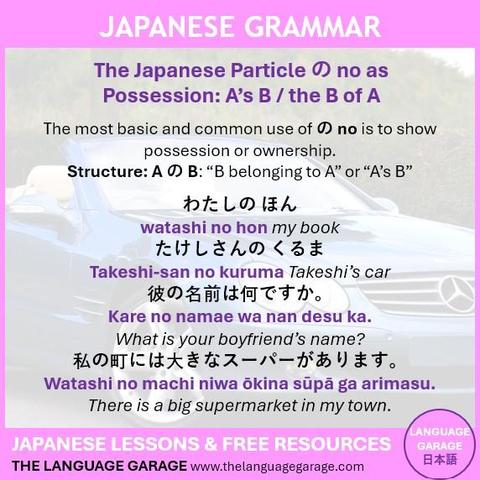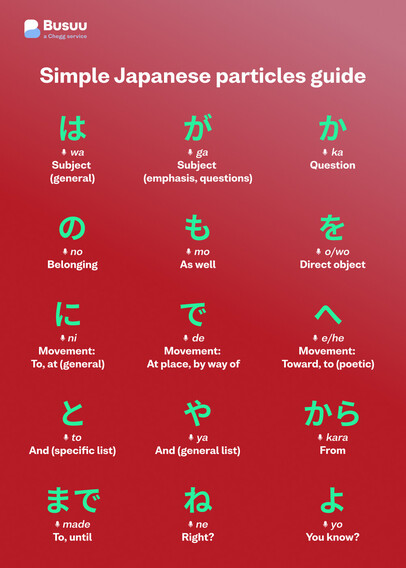#Japanese の no is used to express a relationship between two nouns that English shows with compounds or for or of. #JapaneseGrammar #JapaneseParticles #LearnJapanese. Click to #learn more: https://thelanguagegarage.com/japanese-particle-no/
#JapaneseParticles
The #Japanese particle は wa marks old, known information in the conversation. が ga marks new information. #JapaneseGrammar #JapaneseParticles #Languages. Click to #learn more: https://thelanguagegarage.com/wa-and-ga-in-japanese/
If the information clause following は wa has a subject that’s different from the topic, that subject is marked by the subject particle が ga. #JapaneseGrammar #JapaneseParticles #Languages. Click to #learn more: https://thelanguagegarage.com/wa-and-ga-in-japanese/
#Japanese topics marked by は wa can be nouns, adverbs, location phrases, and so on. #JapaneseGrammar #JapaneseParticles #Languages. Click to #learn more: https://thelanguagegarage.com/wa-and-ga-in-japanese/
One of the uses of the #Japanese particle のno is to show possession: A の B = “B belonging to A” or “A’s B”. わたしの ほん watashi no hon (my book). #JapaneseGrammar #JapaneseParticles #LearnJapanese. Click to #learn more: https://thelanguagegarage.com/japanese-particle-no/
The #Japanese particle は wa marks the topic of a sentence, the person, thing, place, time, etc., that the sentence is about. A topic is not the same as a subject. #JapaneseGrammar #JapaneseParticles #Languages. https://thelanguagegarage.com/wa-and-ga-in-japanese/
Japanese particle chart for anyone who might need it.
#japanese #particles #japaneseparticles #language #languages #hiragana #katakana #kanji






